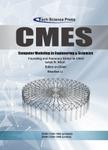Enhancing Critical Path Problem in Neutrosophic Environment Using Python
作者机构:VIT-AP UniversityInavoluBesides AP SecretariatAmaravati APIndia
出 版 物:《Computer Modeling in Engineering & Sciences》 (工程与科学中的计算机建模(英文))
年 卷 期:2024年第140卷第9期
页 面:2957-2976页
核心收录:
学科分类:1202[管理学-工商管理] 1201[管理学-管理科学与工程(可授管理学、工学学位)] 08[工学] 0835[工学-软件工程] 0701[理学-数学] 0812[工学-计算机科学与技术(可授工学、理学学位)] 081202[工学-计算机软件与理论]
主 题:Classical critical path problem fuzzy critical path problem uncertainty neutrosophic triangular single-valued neutrosophic number neutrosophic critical path problem python programming languag
摘 要:In the real world,one of the most common problems in project management is the unpredictability of resources and *** efficient way to resolve uncertainty problems and overcome such obstacles is through an extended fuzzy approach,often known as neutrosophic *** rigorous proposed model has led to the creation of an advanced technique for computing the triangular single-valued neutrosophic *** innovative approach evaluates the inherent uncertainty in project durations of the planning phase,which enhances the potential significance of the decision-making process in the *** proposed method,for the first time in the neutrosophic set literature,not only solves existing problems but also introduces a new set of problems not yet explored in previous research.A comparative study using Python programming was conducted to examine the effectiveness of responsive and adaptive planning,as well as their differences from other existing models such as the classical critical path problem and the fuzzy critical path *** study highlights the use of neutrosophic logic in handling complex projects by illustrating an innovative dynamic programming framework that is robust and flexible,according to the derived results,and sets the stage for future discussions on its scalability and application across different industries.



